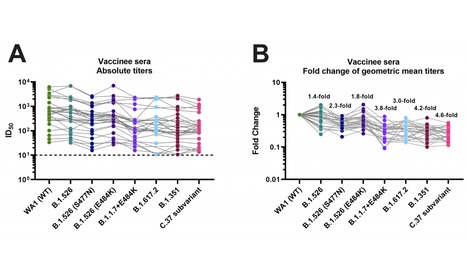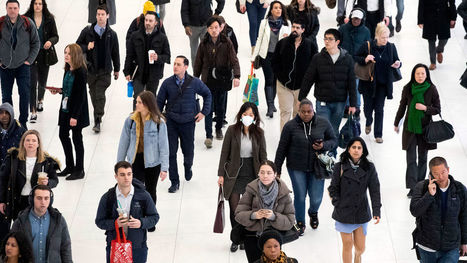Scientists have found several strains of highly pathogenic avian influenza in a small number of NYC’s wild birds. A recent study has found a very small number of wild urban birds that either live in or migrate through New York City are carrying an unexpected hitchhiker: the highly pathogenic avian influenza virus H5N1 (ref). This worrying discovery demonstrates that potentially serious human health risks are not limited to rural environments or to commercial factory farms as most people believe, but can also be found lurking in large cities. Thus, this study — the first of its kind — highlights the dangers of close contact between animals and humans because they may end up sharing infections — or even pandemics. “To my knowledge, this is the first large-scale U.S. study of avian influenza in an urban area, and the first with active community involvement,” the study’s senior author, microbiologist and geneticist Christine Marizzi, an Adjunct Assistant Professor at the Icahn School of Medicine at Mount Sinai, said in a statement. Dr Marizzi also is the principal investigator of the New York City Virus Hunters (NYCVH) Program, and the director of community science at BioBus, which is an initiative to bring cutting-edge laboratory science to communities of students that have been historically underrepresented in science with the help of a converted school bus. Many migratory bird species stop over in New York City during their long journeys, which creates the ideal opportunity for different virus strains to meet and mix.
“Birds are key to finding out which influenza and other avian viruses are circulating in the New York City area, as well as important for understanding which ones can be dangerous to both other birds and humans,” Dr Marizzi explained. “And we need more eyes on the ground — that’s why community involvement is really critical.” The findings were the result of a citizen scientist program to monitor the health of urban wild birds. Samples were collected by high school students in New York City who participate in both research and communication efforts as paid interns under Dr Marizzi’s expert mentorship. As part of their work, they’re provided with all the necessary protective gear to go out into the field and collect bird fecal samples, which they then help screen for viruses. Additional samples are also donated from local animal welfare centers, particularly the Wild Bird Fund, which is a local wild bird rescue. (Disclosure: I’ve been a $upporter of the Wild Bird Fund for many years.). To do this study, the junior scientist interns, or “Virus Hunters”, collected more than 2500 swabs and fecal samples in total from the Wild Bird Fund and from NYC’s parks and other natural areas across the boroughs of Manhattan, Brooklyn and the Bronx. The samples were then screened in a lab at the Icahn School of Medicine at Mount Sinai for the presence of two avian viruses: avian influenza and avian paramyxovirus. The Virus Hunters identified eight birds that were positive for avian paramyxovirus using Polymerase Chain Reaction (PCR). Two type 1 avian paramyxoviruses (APMV1, also known as Newcastle’s Disease Virus), were isolated from feral rock pigeons, Columba livia. These two viral isolates were named, reported to the USDA, and the whole genome sequences were published at the online data repository GenBank. APMV1 is a viral pathogen that affects pigeons and is present in most countries. It is a serious disease that can spread rapidly and cause high rates of pigeon illness and death. Other paramyxovirus strains may affect other avian species, particularly poultry.
Between January 2022 and November 2023, the Virus Hunters continued their work by collecting 1927 samples from raptors, poultry and waterfowl (Figure 1). They screened these samples specifically for H5N1, also known as bird flu. They detected the virus in six city birds representing four different species: Canada geese, Branta canadensis; red-tailed hawks, Buteo jamaicensis; peregrine falcons, Falco peregrinus; and domestic chickens, Gallus gallus domesticus. The positive samples came from the urban wildlife rehabilitation centers, highlighting the critical role that such centers can play in viral surveillance. After comparing the genomic sequences of the samples to each other and to other H5N1 viral genomes available in GenBank, the Virus Hunters found they were a mix of the Eurasian H5N1 2.3.4.4.b clade and local North American avian influenza virus genotypes. Is New York City sitting on a ticking H5N1 pandemic time bomb? “It is important to mention that, because we found H5N1 in city birds, this does not signal the start of a human influenza pandemic,” Dr Marizzi cautioned. “We know that H5N1 has been around in New York City for about 2 years and there have been no human cases reported.”
Currently, only one person has so far been infected by the H5N1 virus in the United States — a dairy worker in Texas. And yet despite the rarity of human H5N1 infections, this virus worries scientists that as bird flu spreads worldwide, the risk of it “jumping” the species barrier into humans continues to grow. For this reason, it’s important that people know what they can do to protect themselves from an infection with H5N1. “It’s smart to stay alert and stay away from wildlife,” Dr Marizzi advised. “This also includes preventing your pets from getting in close contact with wildlife.” Domestic cats are particularly susceptible. For example, out of 24 cats known to have contracted H5N1 on a single Texas dairy farm last month, twelve of them have died so far. If one must handle sick or injured birds or other wildlife, it is important to always use safe practices. These practices include placing a towel, blanket, jumper or pillowcase gently over the stricken animal. This will help keep it calm and aid with safe handling. If dealing with a sick or wounded bird, it is best to gently wrap it in a towel or hold the wings close to its body and place it into a paper bag or box for transport to bird rescue center.
Research Published in Journal of Virology (May 15, 2024):



 Your new post is loading...
Your new post is loading...










